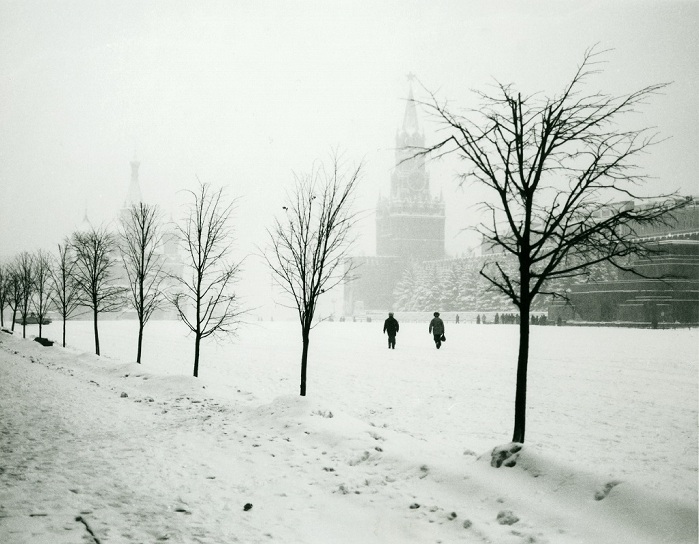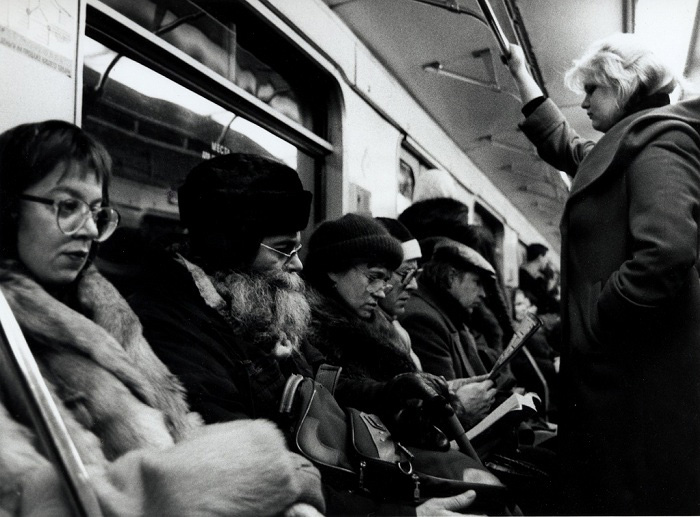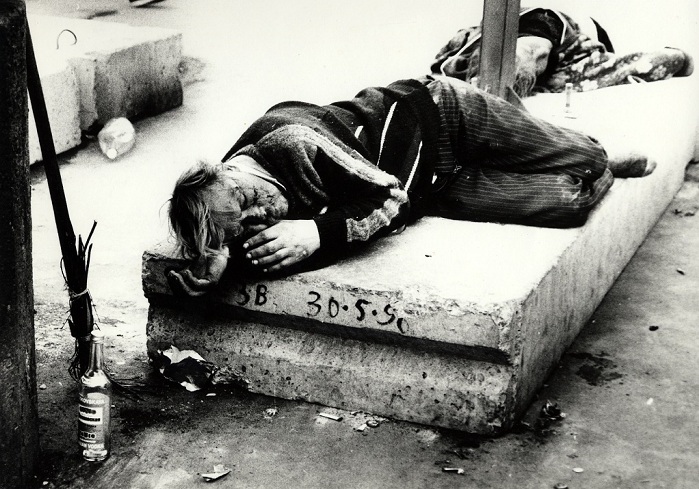Sometimes my lunch breaks as a lawyer at Linklaters were longer than they strictly should have been. I always carried a camera with a lens so sharp you could shave with it in my coat pocket or lawyerly briefcase. If the KGB ever followed me, they must have put me on their distinctly dodgy list, and wondered about the significance of the apparent innocuous scenes that I was clandestinely capturing.
In this first picture, tucked away at the bottom of the frame, there is a figure sitting on a horse. He's the only statue in the scene - the workers erecting the scaffolding are real live people! The man on the horse is Zhukov. Not many people can claim to have saved western civilisation as we know it, but Zhukov can - or rather, could. He was responsible, probably more than any other person, for the defeat of Hitler. He rode a white horse that was famous for trotting in an odd way, with its feet on either side hitting the ground more or less simultaneously rather than alternately. Or so I heard.
The bronze of the statue had weathered to almost black. I was standing next to it when a babushka (little old lady) exclaimed to an accompanying child "The statue is all wrong, Zhukov's horse was white!" I turned to her and blurted out: "I believe Zhukov himself was white too".
Usually the witty riposte occurs to me five minutes later, five minutes too late, so I felt smug for at least a day after that. And in a foreign langauge too! In fact, still feel a bit smug, over a decade later.
The second picture speaks for itself. I used to find it hard to look at, but then again, I don't see why I should, and now it no longer bothers me. But it is a disturbing image. Am I exploiting the woman in the picture? On the one hand, I'm giving her money, which can't be a bad thing, but maybe I'm only doing it to take her picture - would I have given her the money without taking the picture? So maybe it's exploitation. And I'm also taking her picture without her consent. The fact that I am wearing a jacket, apparently well dressed, doesn't help - and she is kissing my hand. There is something shocking about that. But why should there be? Is it shocking to wear a suit? Or to give money? Or to take someone's picture? Or to kiss someone else's hand? Or the combination of all these? Maybe the picture is uncomfortable because it puts in front of us something that we would rather not see? Who is at fault here: the photographer (me) for taking the picture, the owner of the hand (again me) for wearing a suit, the babushka for abasing herself, or the viewer for not liking to see some kind of truth?
I'm sure there's a PhD in there somewhere.
And the third picture - babushki s ogurchikami - for good luck. I find the smile and eyes of this babushka mesmerising, hundreds of years of babushkina bonhomie and supply of pickled cucumbers distilled into one look. It was taken at Novie Cheryomushki Market. Cheryomushki is a kind of cliche for a 'new' Soviet district in Moscow. Shostakovitch orchestrated a song about it which involves a chicken which doesn't want to be cooked which I sing from time to time in the bath.
And I think everyone understands the significance of cucumbers. No, not that significance, the other one: cucumbers = zakuska = bite on it to accompany a shot of = vodka. Cucumbers could be a kind of symbol of Russia in transformation, the engine that powers the drinking Russian muzhik from one end of the day to the other. A bit like potatoes for an Irishman, only with more vodka.






